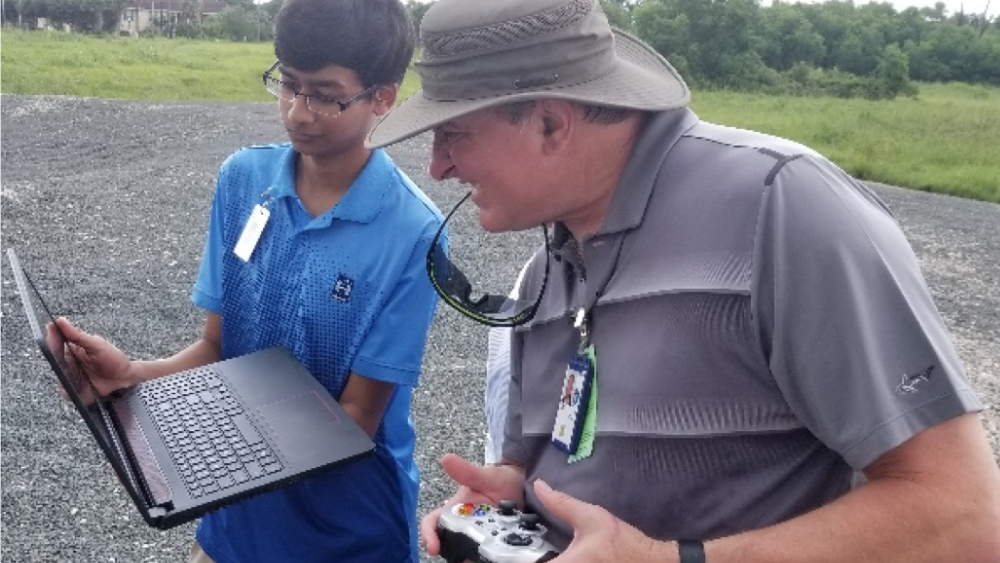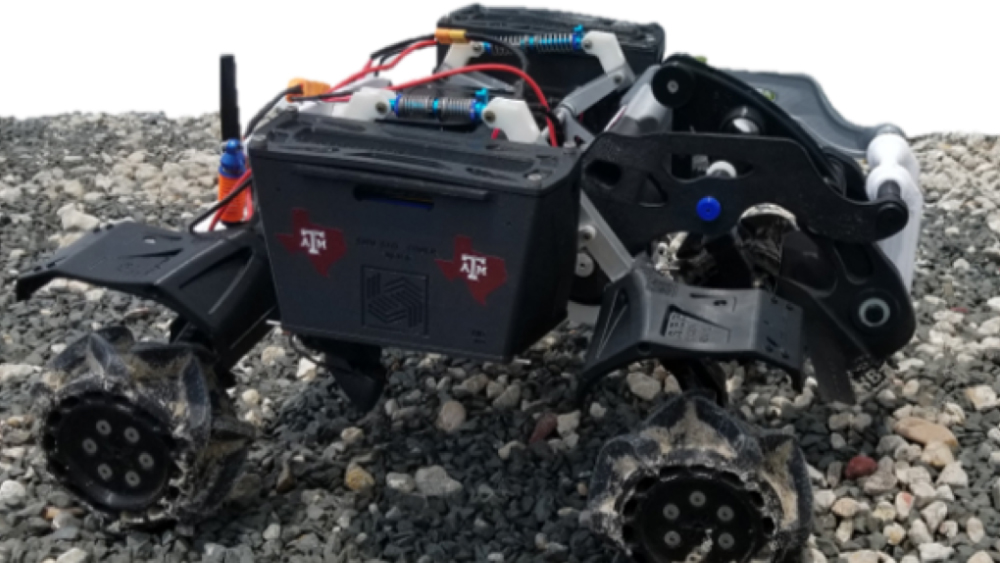NASA has a new directive to return humans to the moon by 2024. This directive generates a compelling need for a more comprehensive understanding of the lunar environment.
“We find your rover to be fully acceptable,” said Lee Graham, senior project engineer within the Astromaterials Research and Exploration Science (ARES) Division of the Human Exploration and Operations Mission Directorate at NASA’s Johnson Space Center.

This statement was made after a final successful demonstration of the articulated suspension robot called LOUIE (Lunar Observation, Utility and Imaging Explorer) was conducted by Texas Space Technology Applications and Research (T STAR), ATG Mobile Electric Systems and undergraduate students from the mechatronics program at Texas A&M University. Graham’s statement further cemented the team as a valuable partner for NASA in meeting the United States Vice President’s directive to return humans to the moon.
In response to NASA’s requirement to develop a small-form factor mobile platform to perform lunar regolith (soil) analysis and characterization as well as imaging for concurrent lunar operation, T STAR and ATG partnered with the Mobile Integrated Solutions Laboratory (MISL) within the Department of Engineering Technology and Industrial Distribution to adapt the Articulate-Leg Suspension Evaluation Platform and Digital Systems Teaching and Research (ASEP/DSTR-class) robots to meet NASA’s diverse set of requirements.
On July 31, the industry-academic team successfully completed its demonstration of LOUIE, which was then accepted by Graham. Mechatronics students Shane Blozis and Daniyal Ansari were the primary hardware and software engineers on the project. ATG’s Herbert Baumgartner ’09 led the major mechanical modifications and addition to the robot, and T STAR’s Matt Leonard ’86 managed and directed the project. Other students from the department who played a role in bringing LOUIE to fruition were Shelby Baron and Dustin Tish who worked closely with Dr. Joseph Morgan, director of MISL.
LOUIE’s capabilities and adaptability has piqued NASA interests in meeting the lunar mission requirements including regolith sample imaging. In addition, LOUIE will perform lunar trenching to support lunar roadbed preparation. LOUIE’s multifaceted mission while on the moon will include instrument deployment, roadbed preparation, video recording of the launch of the return vehicle and the distribution of radio-frequency identification sensors that will help NASA scientists collect information about lunar water ice and establish a geo-location infrastructure.
Following the successful completion of STRATA-1, Hermes, HeliKite and Cardinal, LOUIE is the latest example of the win-win proposition of the public-private-academic partnership which has been established by T STAR over the past three years.
What we have been able to do in bringing NASA problems to the mechatronics/electronic systems problem solvers should be expanded across the Texas A&M System. The strength of Texas A&M’s multidisciplinary applied research is a natural fit for the needs of NASA as they begin to execute their new lunar mission objectives. T STAR is excited to be the focal point in executing these endeavors.

“Working with T STAR, ATG and the MISL has allowed us to move forward from ideas to working prototypes in a timely and cost-effective manner,” stated Graham. “It is great to have this type of functional turn-around in these projects, but what may be far more important is the fantastic learning experience these undergraduate students receive by engaging in our projects through their capstone design experience or as a member of an applied research team.”
The ASEP/DSTR robot platform has supported not only applied research such as LOUIE, but has been used in a wide variety of STEM outreach and recruiting efforts. The DSTR version of the articulated suspension robot has been used by Blinn College in Bryan and Brenham in their introduction to engineering courses, at Brandeis High School in San Antonio in their robotics course and in a number of STEM workshops. The newest use of the DSTR robot is by the All Nations Community School in The Woodlands as the primary project for their STEM-based math and science class being offered for the first time this fall.